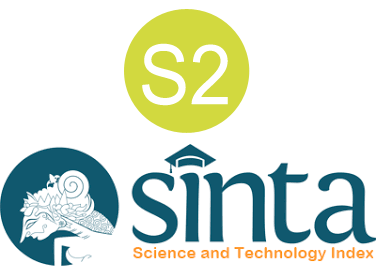Semantic Analysis of Children's Education Curriculum According to the Qur'an: A Study of Q.S. Luqman Verses 12-19
DOI:
https://doi.org/10.37680/qalamuna.v17i1.7138Keywords:
Children's Education; Q.S. Luqman; Semantic AnalysisAbstract
This study offers a study of the values of children's education contained in the Qur'an, Surah Luqman, verses 12-19, with the hope that this study can be a reference for educational institutions and the wider community to educate children based on the Qur'an. This study is a library research using the Qur'an as a primary source. The method used is qualitative, and this study uses a language approach and semantic analysis techniques in analyzing data. This study found seven values of children's education contained in the Qur'an, Surah Luqman, verses 12-19, namely gratitude, monotheism, birrul walidaini, piety, establishing prayer, humility, and asceticism. The construction of the seven values into the curriculum content of children's education is as follows: gratitude contains moral values, monotheism contains belief values, birrul walidaini contains social-emotional and moral values, piety contains cognitive values, establishing prayer contains social-emotional values, humility contains moral and social-emotional values, and asceticism contains language and social values. The findings of this study are expected to be a reference for the Muslim community to educate children based on the Qur'an and to be a reference for informal, formal, and non-formal educational institutions in educating children based on the Qur'an.
References
Abu Nashr As-Sarraj Ath-Thusi. (2004). Al-Luma’. Risalah Gusti.
Ahmad Mustafa Al-Maraghi. (1989). Tafsir Al-Maraghi. Toha Putra Semarang.
Al-Baghdadi, A. I. A. A. Q. A. J., Pribadi, S., & Bunyani, M. N. (n.d.). Risalah-risalah Sufistik Imam Al-Junaid Al-Baghdadi. Penerbit Kalam.
Al-Ghazali. (2000). At Tibrul Masbuk fi Nashihatil Mulu. DKI Beirut Original.
Ali, A. Y. (1946). The Holy Qur'an: Text, Translation and Commentary (Issue v. 2). Hafner Publishing Company.
Al-Khalidy, S. A. F. (1999). Kisah-kisah Al-Qur’an: pelajaran dari orang-orang dahulu. Gema Insani.
Aminuddin, S. (2008). Pengantar Studi Tentang Makna. Bandung: PT. Sinar Baru Algesindo.
Asad, M. (1988). Islam di simpang jalan. Thinker’s Library.
Ashani, S., Harahap, M. R. P. A., & Maulani, M. (2021). Trilogi Pemikiran Tasawuf Imam Junaid Al-Baghdadi (Mitsaq, Fana, dan Tauhid). Syifa Al-Qulub: Jurnal Studi Psikoterapi Sufistik, 5(2), 97–113.
Ash-Shiddieqy, H. (1976). Tafsir al-Qur’an al-Bayan. PT Al-Ma’arif.
Asrori, I. (2007). Pewahyuan Alquran Sebagai Komunikasi Linguistik Berdimensi Langue Dan Parole Model Saussurian. Jurnal Bahasa Dan Seni, 53(2).
Bandura, A., & Walters, R. H. (1977). Social learning theory (Vol. 1). Prentice Hall, Englewood Cliffs, NJ.
Bowlby, J. (2008). A secure base: Parent-child attachment and healthy human development. Basic books.
Chaer, A. (1990). Pengantar semantik bahasa Indonesia. (No Title).
Daulay, N. (2015). PENDIDIKAN KARAKTER PADA ANAK DALAM PENDEKATAN ISLAM DAN PSIKOLOGI. MIQOT: Jurnal Ilmu-Ilmu Keislaman, 39(1). https://doi.org/10.30821/miqot.v39i1.51
Departemen Agama, R. I., & Al-Qur’an dan Terjemahannya, J. (1996). Al-Qur’an dan Tafsirnya, Jakarta, CV. Ferlia Citra Utama.
Dweck, C. S. (2006). The New Psychology of Success. New York: Random House.
Fadli, M. R. (2021). Fadli, Muhammad Rijal. “Memahami desain metode penelitian kualitatif.” Humanika, Kajian Ilmiah Mata Kuliah Umum 21.1 (2021): 33-54. Humanika, 21(1).
Gardner, H. E. (2000). Intelligence reframed: Multiple intelligences for the 21st century. Hachette UK.
Gibb, H. A. R., & Kramers, J. H. (2024). Shorter Encyclopaedia of Islam. Brill.
Hamka. (2020). Tafsir al-Azhar Jilid 1: Diperkaya dengan Pendekatan Sejarah, Sosiologi, Tasawuf, Ilmu Kalam, Sastra, dan Psikologi. Gema Insani.
Kamba, M. N. (2022). Kids zaman now: menemukan kembali Islam. Pustaka IIMaN.
Katsir, I. (2010). Shahih Tafsir Ibnu Katsir terjemah oleh Abu Ihsan al-Atsari. Jakarta: Pustaka Ibnu Katsir.
Koenig, H. G. (2018). Religion and mental health: Research and clinical applications. Academic Press.
Kohlberg, L., & Power, C. (1981). Moral development, religious thinking, and the question of a seventh stage. Zygon: Journal of Religion and Science, 16(3).
Kondo, M. (2014). The life-changing magic of tidying up: The Japanese art of decluttering and organizing. Ten Speed Press.
Krathwohl, D. R. (2002). A revision of Bloom’s taxonomy: An overview. Theory into Practice, 41(4), 212–218.
Madjid, N. (2002). Manusia Modern Mendamba Allah. In Renungan Tasawuf. Pustaka IIMaN.
Melong, L. J. (2000). M etode Penelitian Kualitatif. Remaja Rosda Karya.
Muhammad, D. H., Deasari, A. E., & Dirgayunita, A. (2021). PENDIDIKAN ANAK USIA DINI BERBASIS PSIKOLOGI ISLAM. JURNAL PENDIDIKAN ISLAM AL-ILMI, 4(1). https://doi.org/10.32529/al-ilmi.v4i1.821
Nata, A. (2005). Tokoh-tokoh pembaruan pendidikan Islam di Indonesia. Divisi Buku Perguruan Tinggi, RajaGrafindo Persada.
Nazalia, I., & Fitria, L. (2024). The Concept Of Education In The Qur’an: A Critical Study Of Al-Ghazali’s Thinking. Didaktika: Jurnal Kependidikan, 13(2), 2253–2266.
Quraish, S. M. (1996). Wawasan al-Qur’an. Bandung: Mizan, 3.
Ramli, M. A. (2022). Early Childhood Education in Islamic Perspective. Bulletin of Early Childhood, 1(1), 31–41.
Ritonga, M., Ritonga, A. W., Oktavera, H., & Desrani, A. (2024). Islamic Education Interventions in Children: Study Using the Al-Qur’an Approach. JIE (Journal of Islamic Education), 9(2), 541–562.
Sayid Ali Hasan Alatas. (1994). Hikmah-Hikmah Luqman Al-Hakim (Ziad Hasan Al-Hamid, Ed.). YPI.
Seligman, M. E. P. (2011). Flourish: A visionary new understanding of happiness and well-being. Simon and Schuster.
Shihab, M. Q. (2007). Lentera hati: Kisah dan hikmah kehidupan. Mizan Pustaka.
Siregar, L. Y. S. (2017). Pendidikan anak dalam islam. Bunayya: Jurnal Pendidikan Anak, 1(2), 16–32.
Suharsini, A. (2006). Prosedur Penelitian Suatu Pendekatan Praktik. (Jakarta: Rineka Cipta.
TADJUDDIN, N. (2018). Pendidikan Moral Anak Usia Dini Dalam Pandangan Psikologi, Pedagogik, dan Agama. Al-Athfaal: Jurnal Ilmiah Pendidikan Anak Usia Dini, 1(1). https://doi.org/10.24042/ajipaud.v1i1.3386
Tarigan, H. G., & Kosakata, P. (1985). Pengantar Semantik. Bandung: Angkasa.
Taubah, M. (2015). Pendidikan anak dalam keluarga perspektif Islam. Jurnal Pendidikan Agama Islam (Journal of Islamic Education Studies), 3(1), 109–136.
Trisnawati, W., & Sugito, S. (2020). Pendidikan Anak dalam Keluarga Era Covid-19. Jurnal Obsesi : Jurnal Pendidikan Anak Usia Dini, 5(1). https://doi.org/10.31004/obsesi.v5i1.710
Downloads
Published
How to Cite
Issue
Section
License
Copyright (c) 2025 Jumhur Jumhur, Wasilah Wasilah, Nazarmanto Nazarmanto, Bambang Prasetyo

This work is licensed under a Creative Commons Attribution-ShareAlike 4.0 International License.
Authors who submit manuscript retain its copyright and grant publisher right of first publication licensed under a Creative Commons Attribution-ShareAlike 4.0 International License (CC BY-SA 4.0) that allows others to access (search, read, download, and cite), share (copy and redistribute the material in any medium or format) and adapt (remix, transform, and build upon any material) the work for any lawful purpose, even commercially with an acknowledgement of the work's authorship and initial publication in Qalamuna: Jurnal Pendidikan, Sosial, dan Agama.











